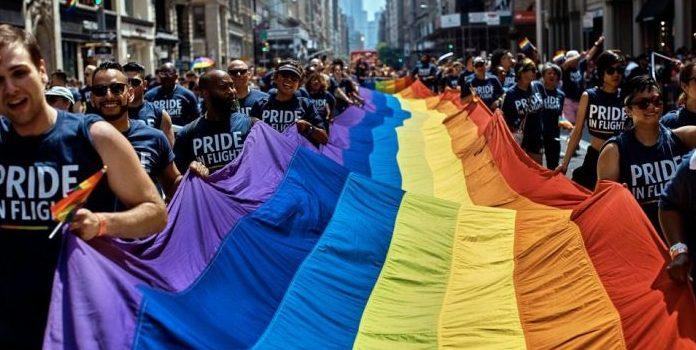(Dmytro “Henry” Aleksandrov, Headline USA) In its new report, the Human Rights Campaign suggested that 1 in 7 voters will identify as LGBTQ by 2030, a trend that could have huge impact on battleground states in future elections.
“LGBTQ voters are predicted to become the fastest growing voting bloc in the near future, with the report suggesting that one in five voters will be LGBTQ by 2040, according to the HRC and Bowling Green State University (BGSU),” the Daily Caller reported.
“The report explained that 11% of voters are currently LGBTQ, and expects numbers to continually climb as Generation Z voters age and ‘come out.’”
The predictions of the report are based on the current LGBTQ numbers because people who conducted the poll could not ask minors. They duplicated Gen Z statistics and applied them to the New Generation (born 2004-2014) and Pre-New generation (born 2015 or later).
“The percentage of Generation Z respondents identifying as LGBTQ+ was used for these generations,” according to the report.
“As we continue to see higher levels of LGBTQ+ identification, as well as earlier ages of coming out as LGBTQ+, in the younger birth cohort, this is a conservative estimate of LGBTQ+ identification in these generations.”
The claim that there will be more homosexual voters in the future is proved by the increased number of LGBTQ people with every new generation.
“Currently, 27% of Gen Z (born 1997-2003), 15.6% of Millennials (born 1981-1996), 7.6% of Gen X (born 1965 -1980) and 4.6% of Boomers (born 1946-1964) identify as LGBTQ.”
The report also claimed that the LGBTQ electorate was very important for Joe Biden when he was running for president in 2020.
“The LGBTQ+ electorate was pivotal in ensuring Joe Biden’s victory in several key states—and, subsequently, in winning the Presidency. Had LGBTQ+ voters stayed home, it is likely Donald Trump would have won re-election.”
The number of LGBTQ voters is expected to increase in Georgia, Arizona, Texas, Nevada and Colorado. Ohio, another state that is expected to see the increase, is also expected to have the highest percent change in comparison to other states listed.
“These states and these leaders [are] on the wrong side of history, but I think they’re really on the wrong side of the demographics, even,” Shoshana Goldberg, lead author of the study and director of public education and research at the Human Rights Campaign Foundation, said.
“Just the basic numbers suggest that where these states are going versus where their states’ politicians think that they’re going, suggests a pretty big mismatch.”

